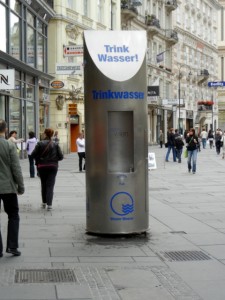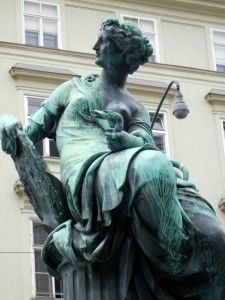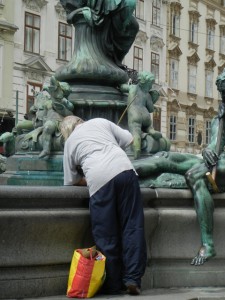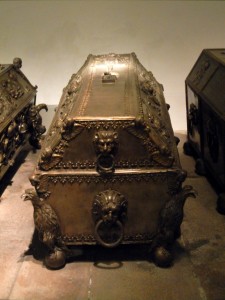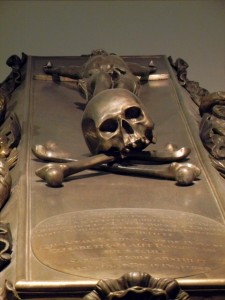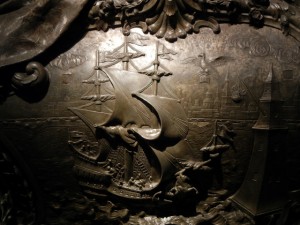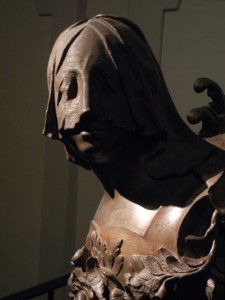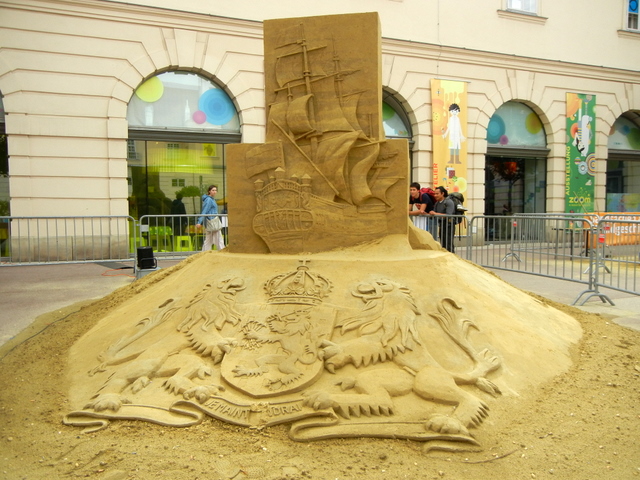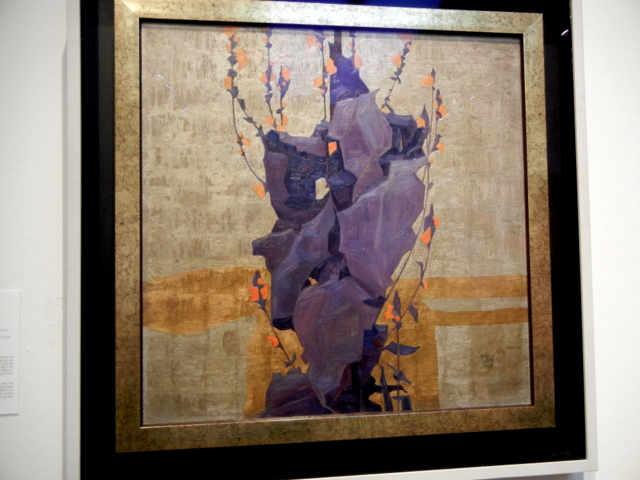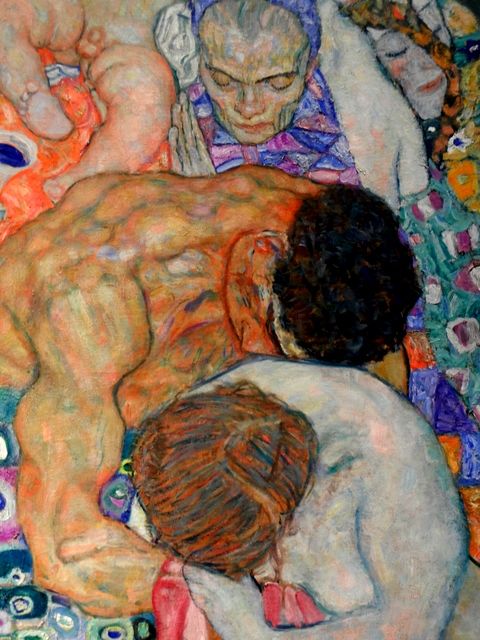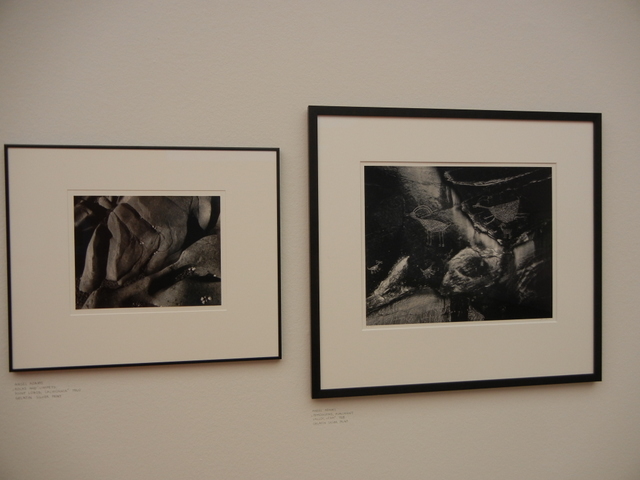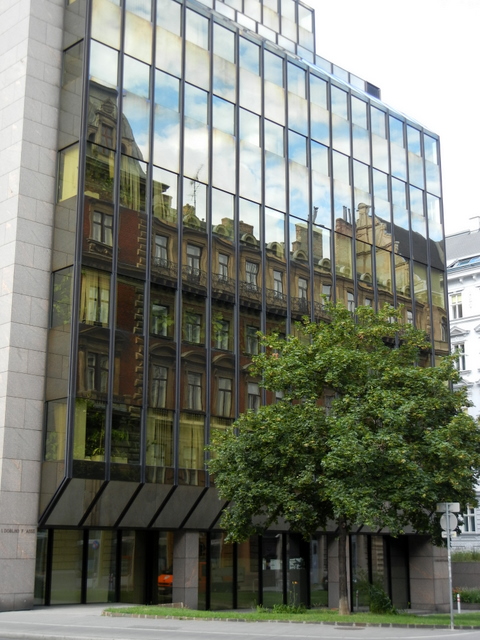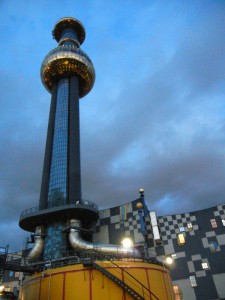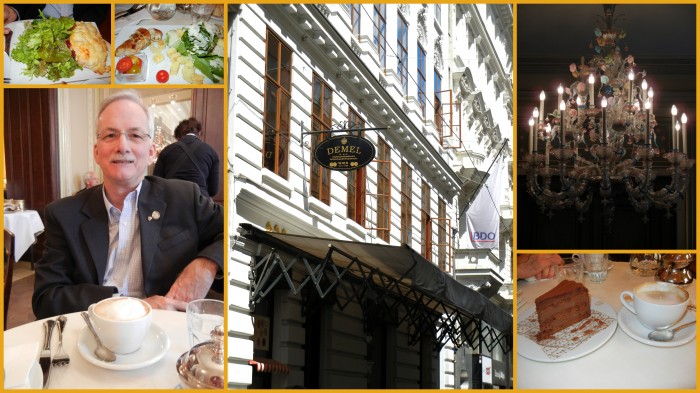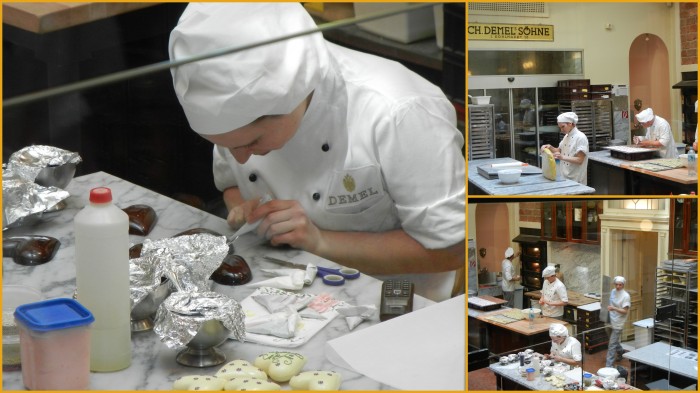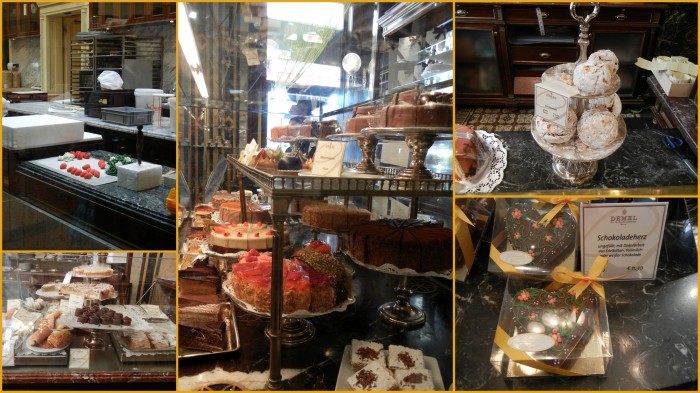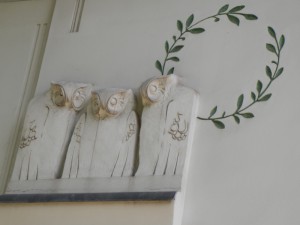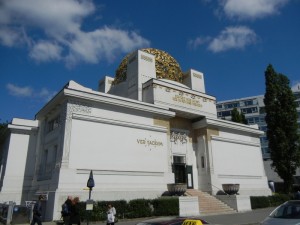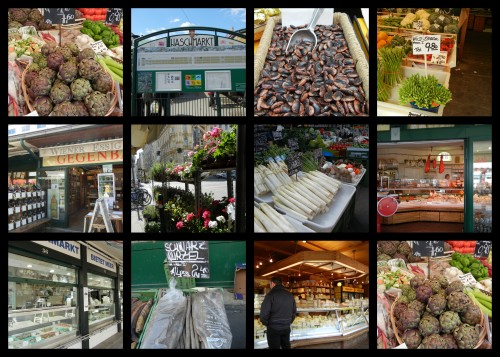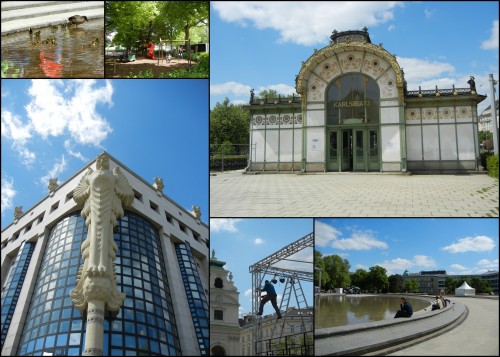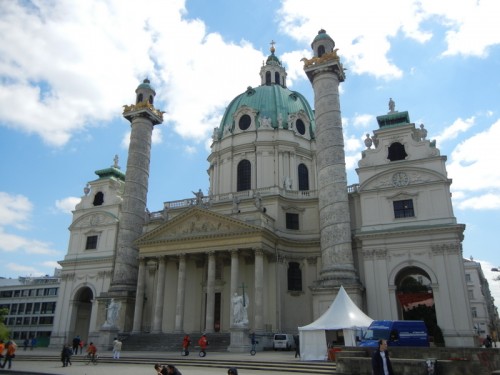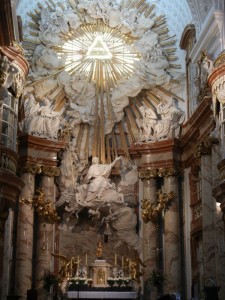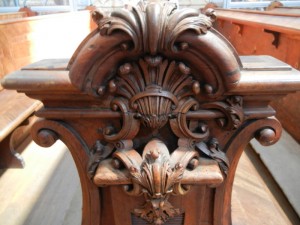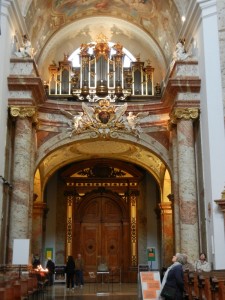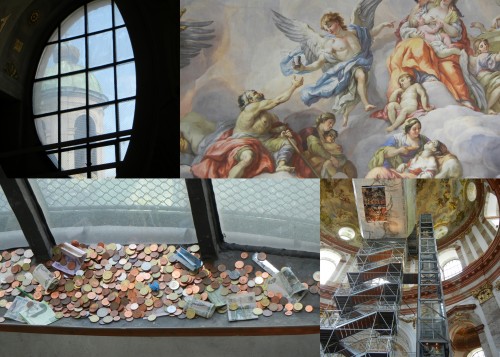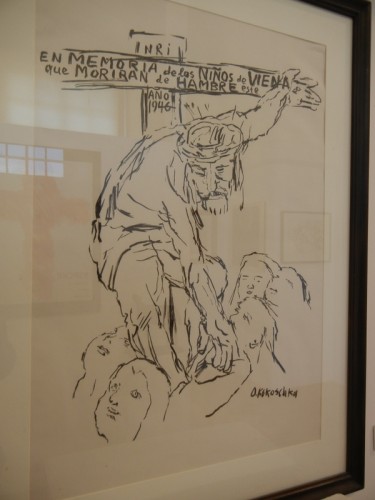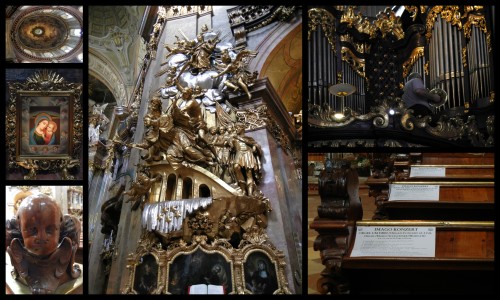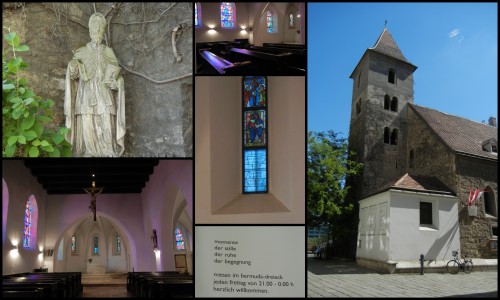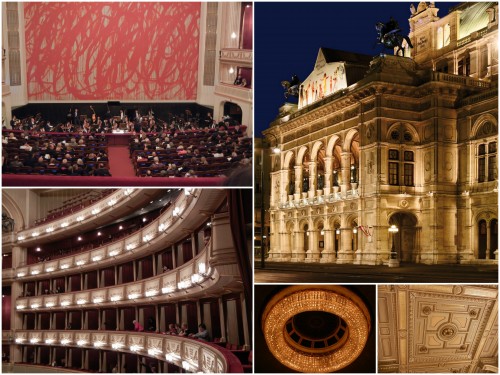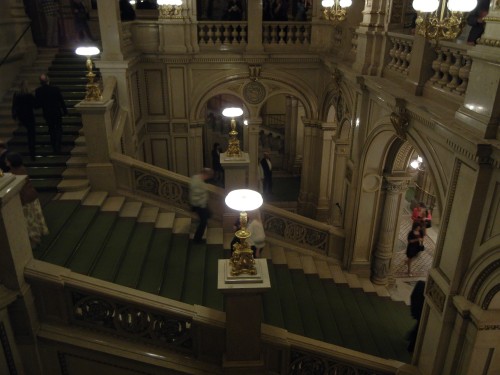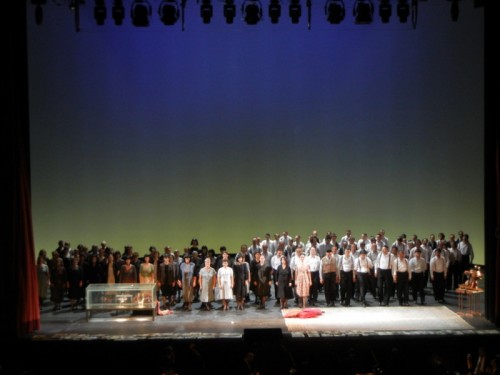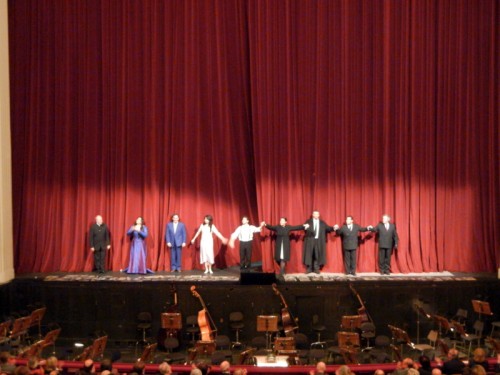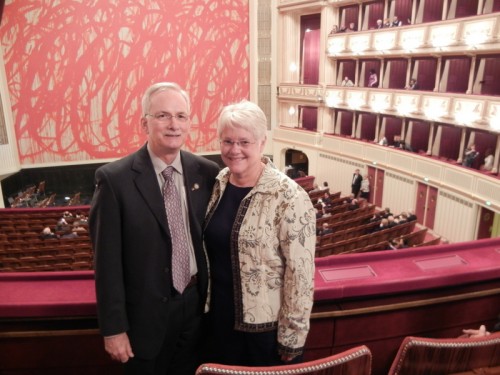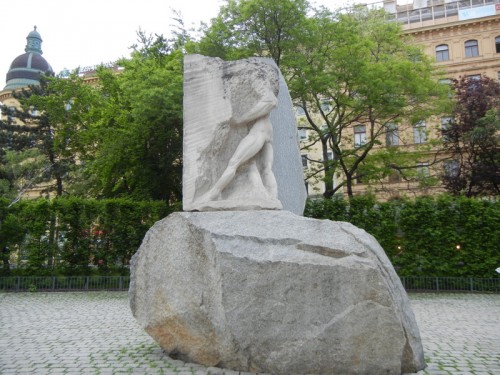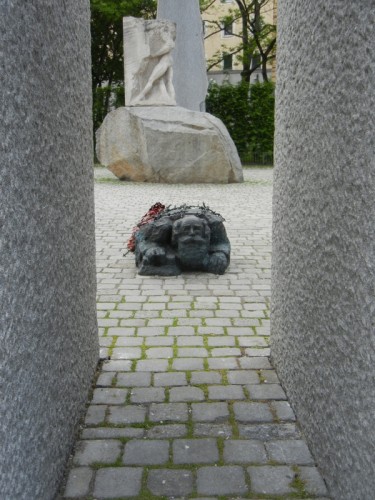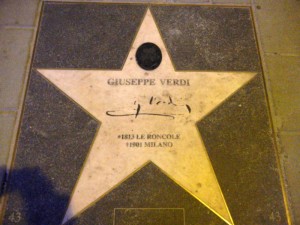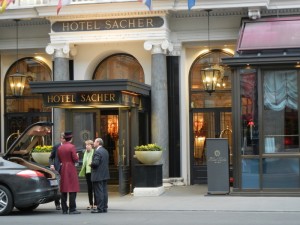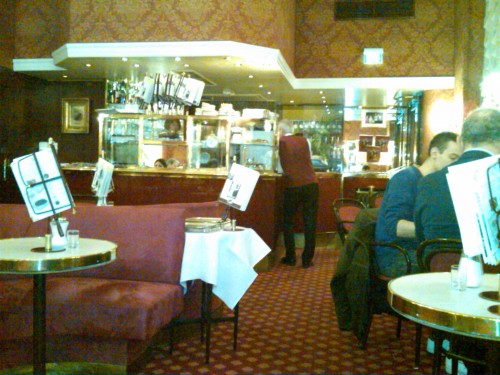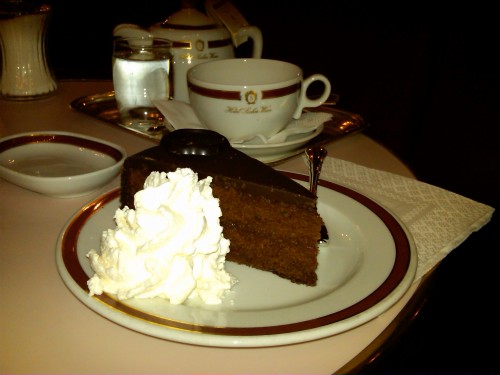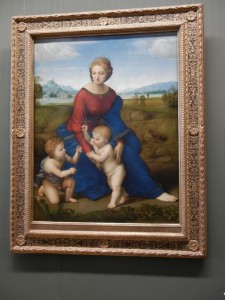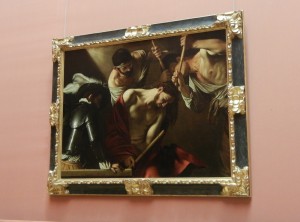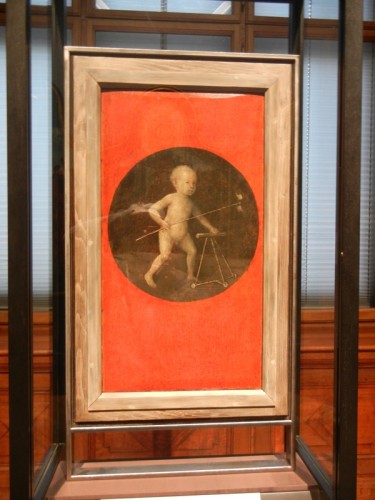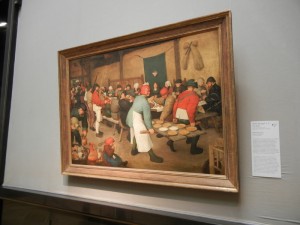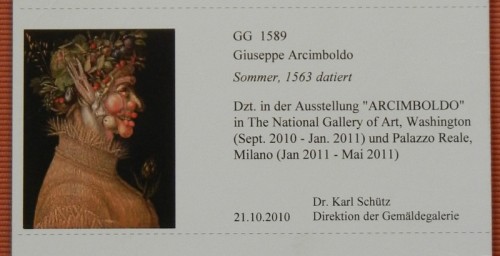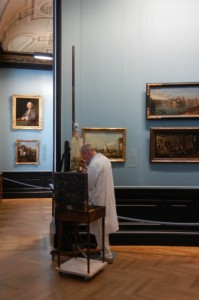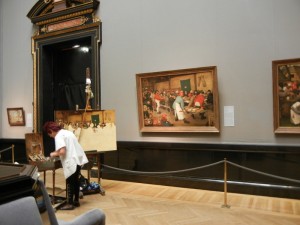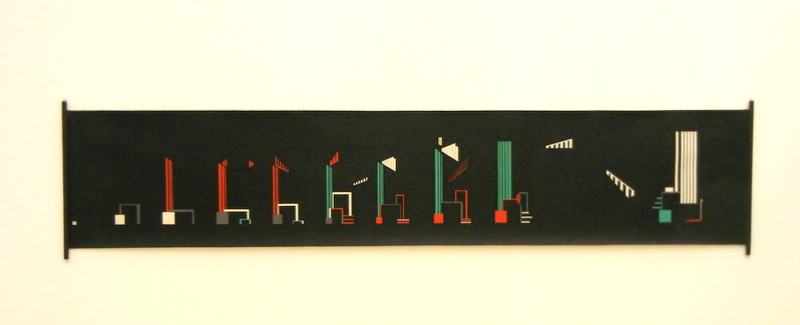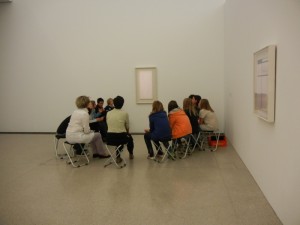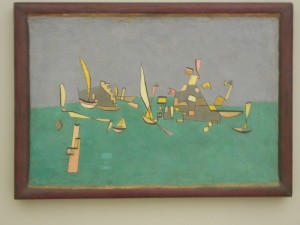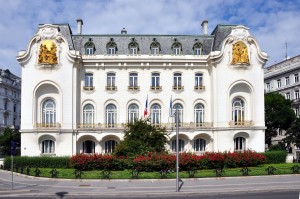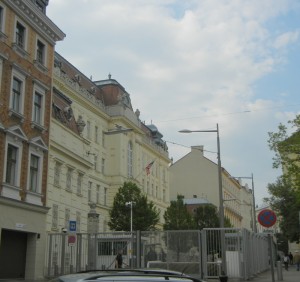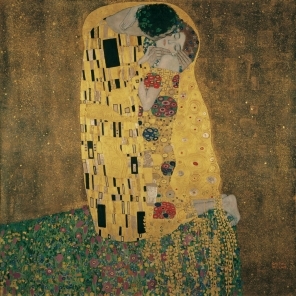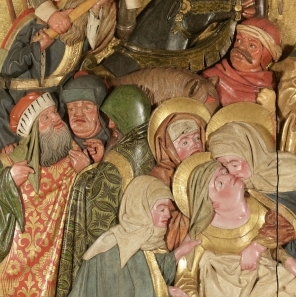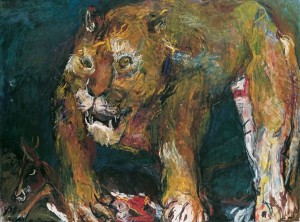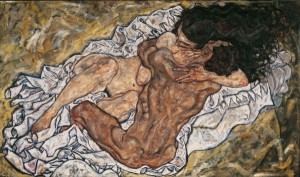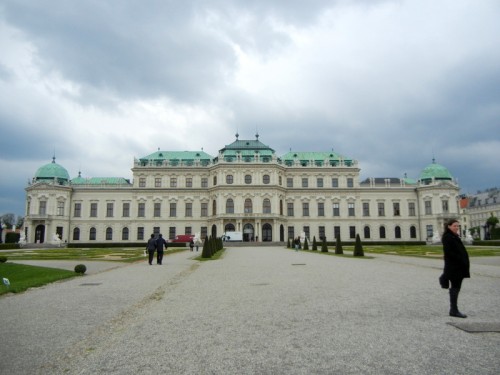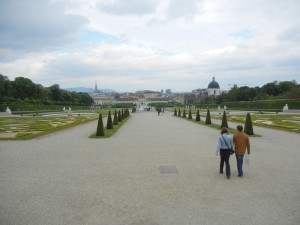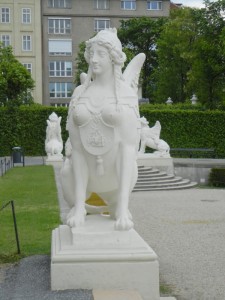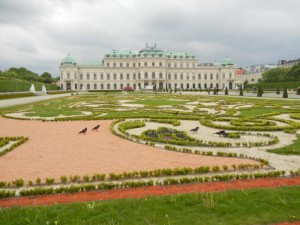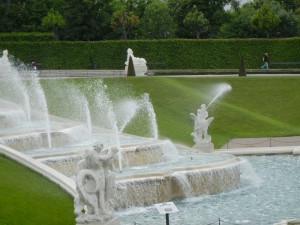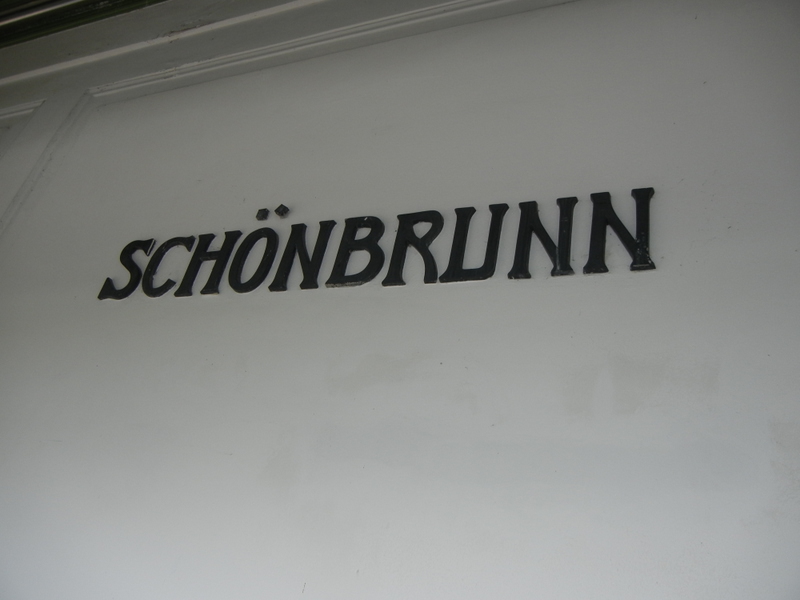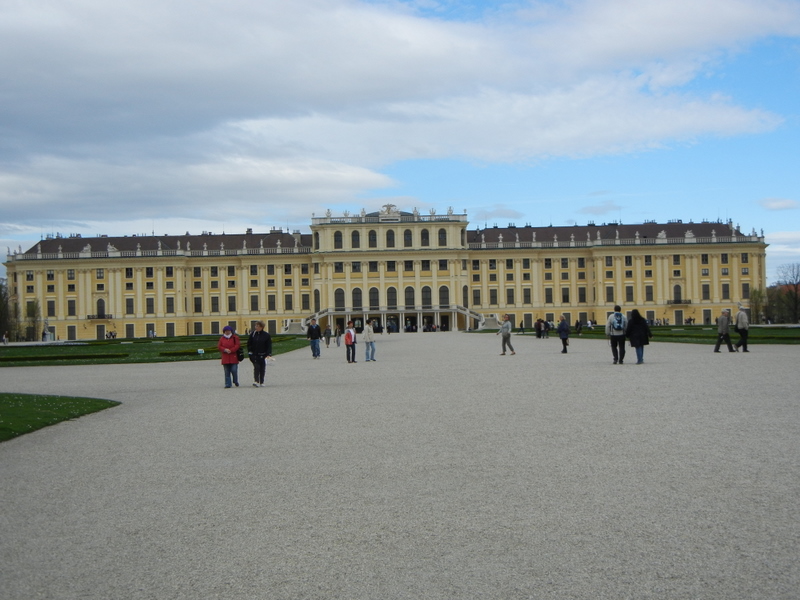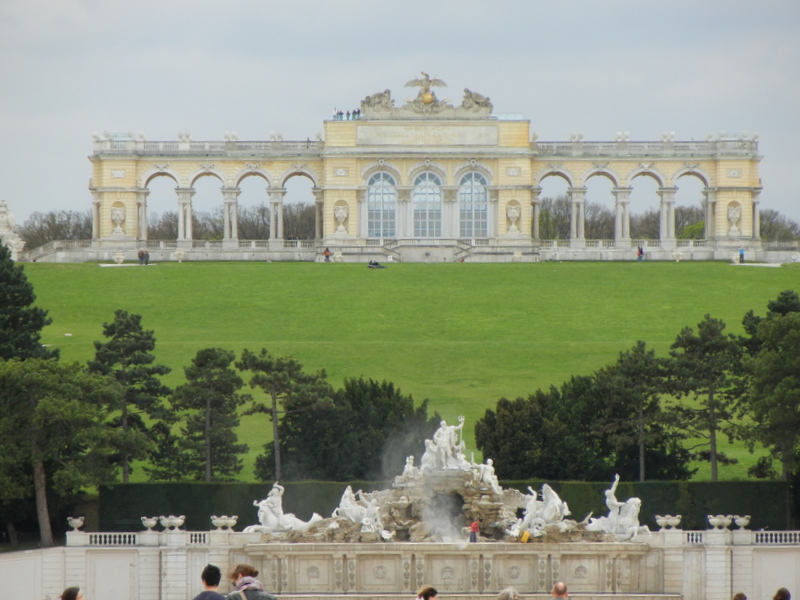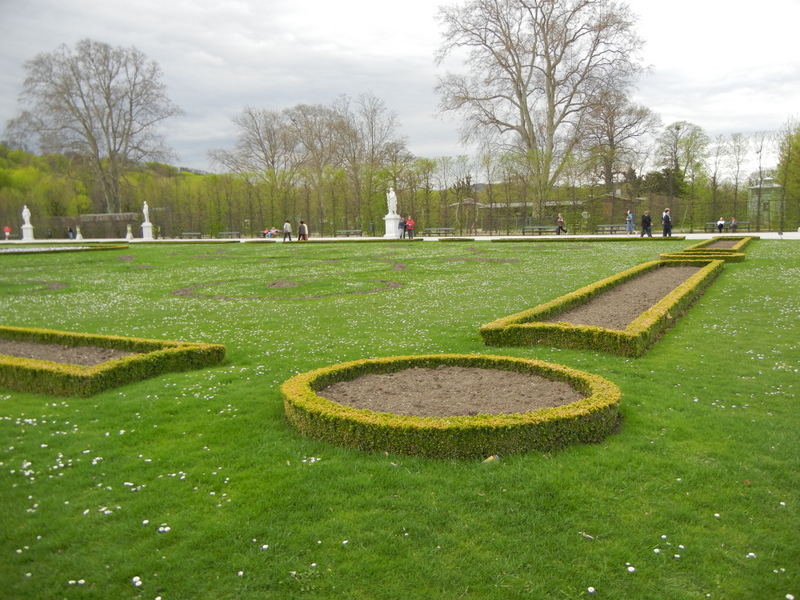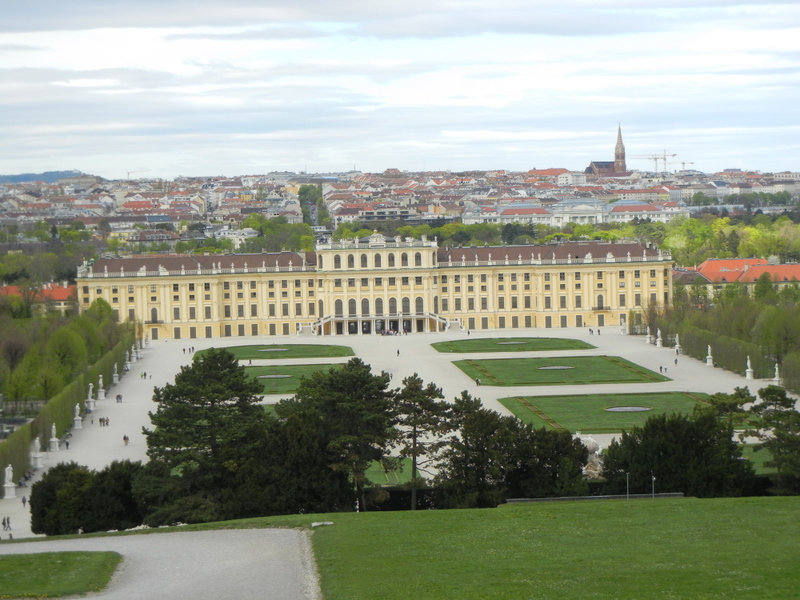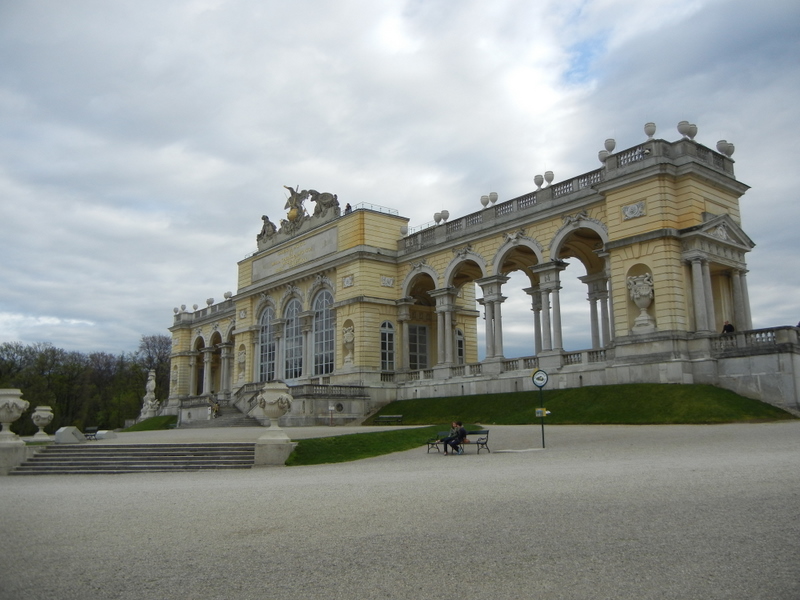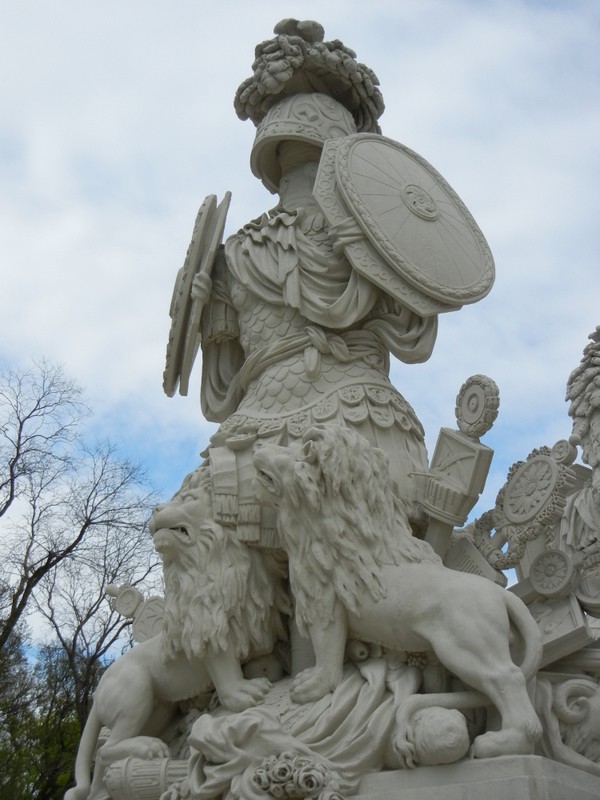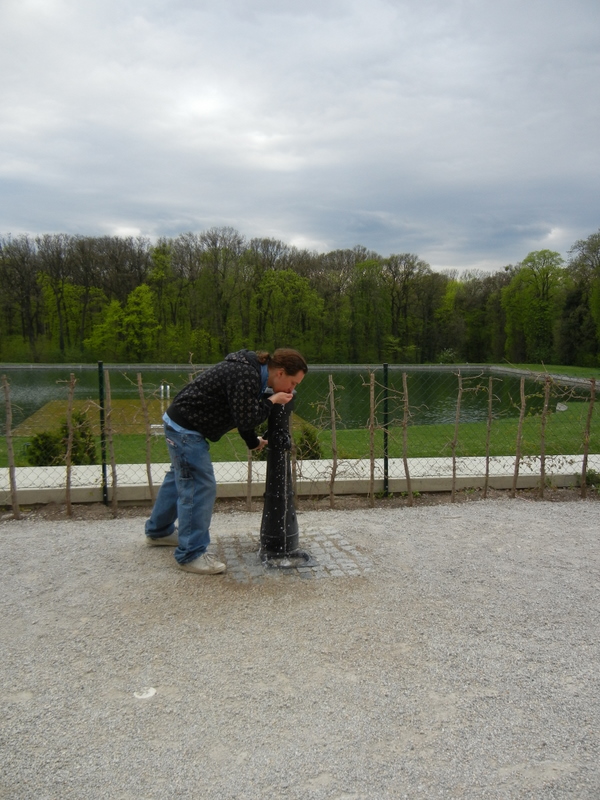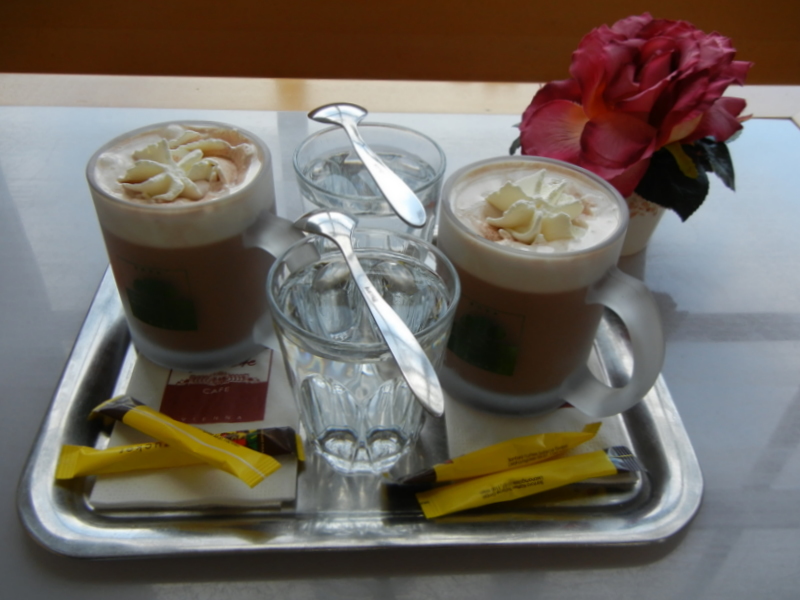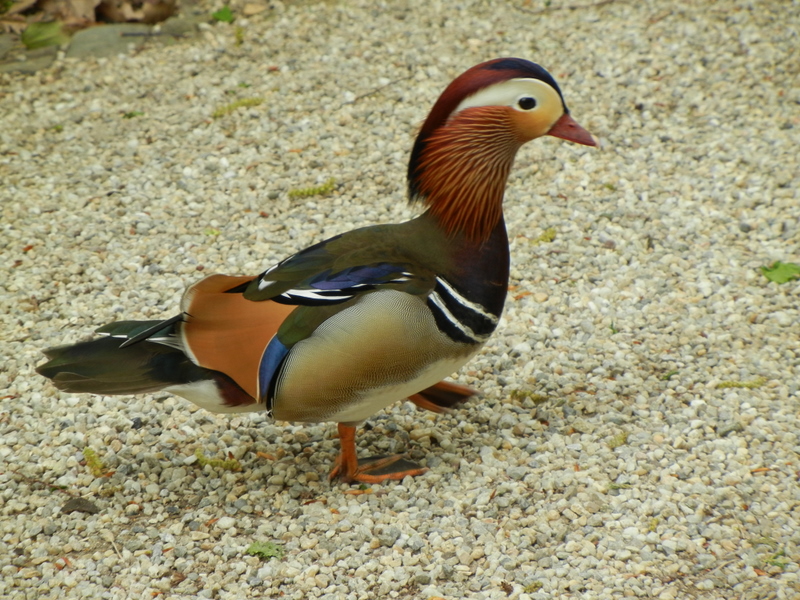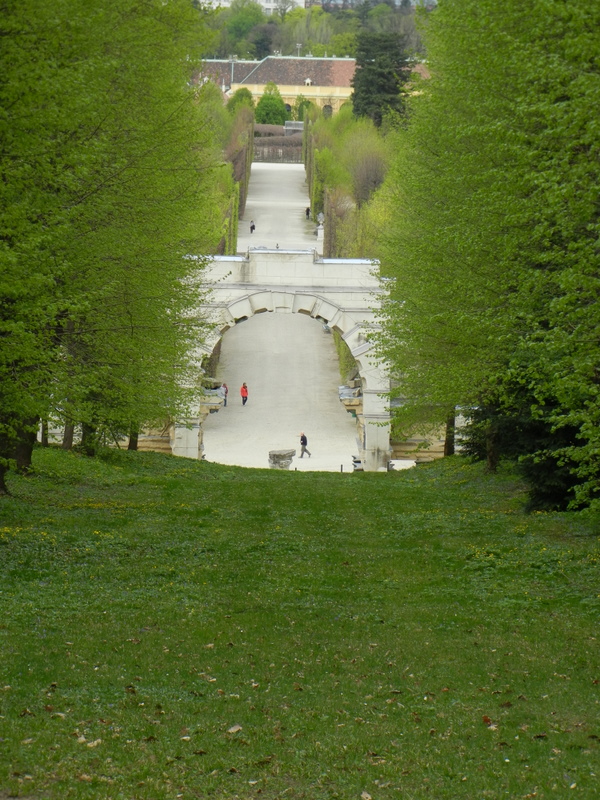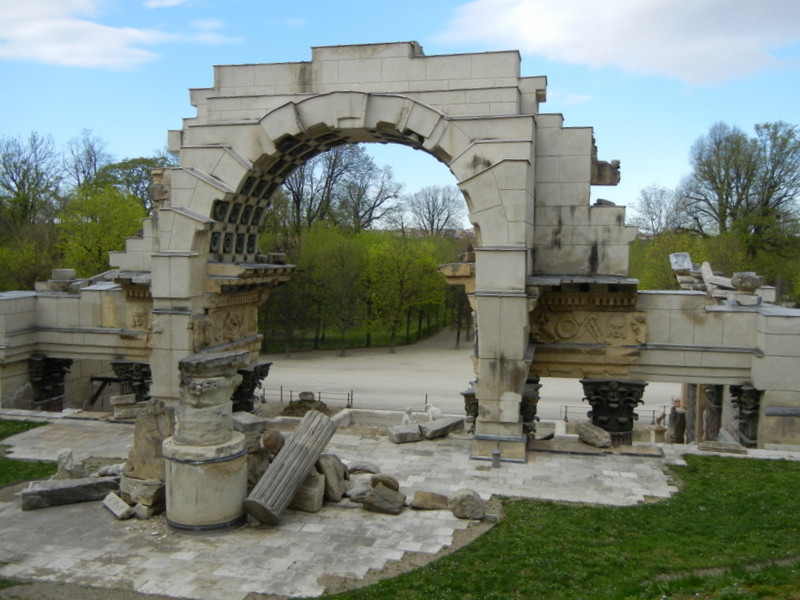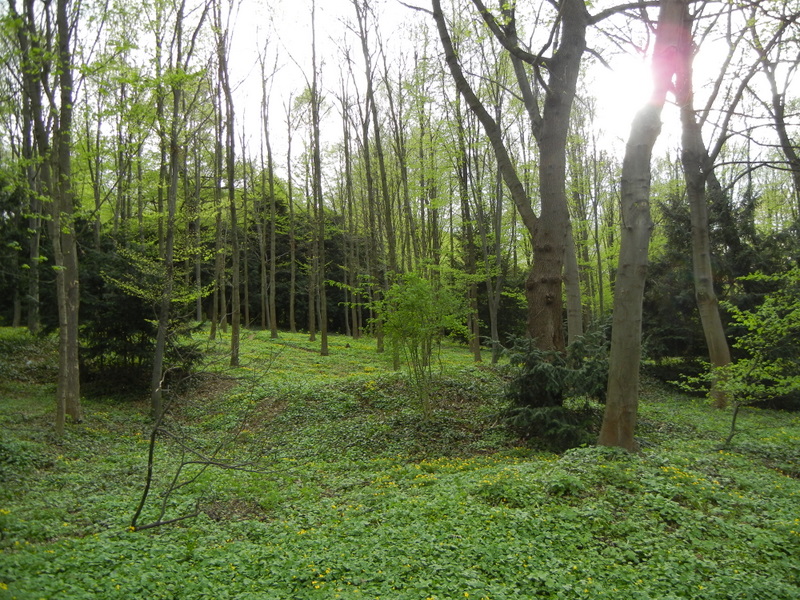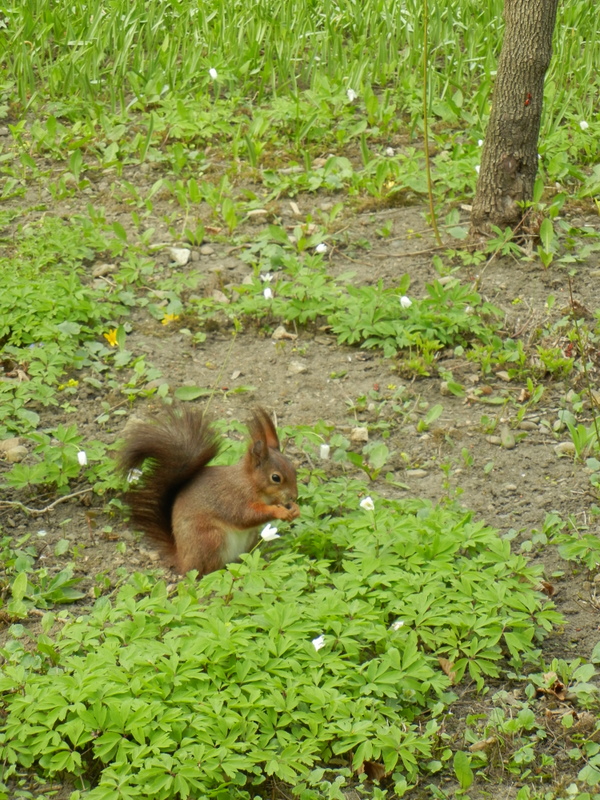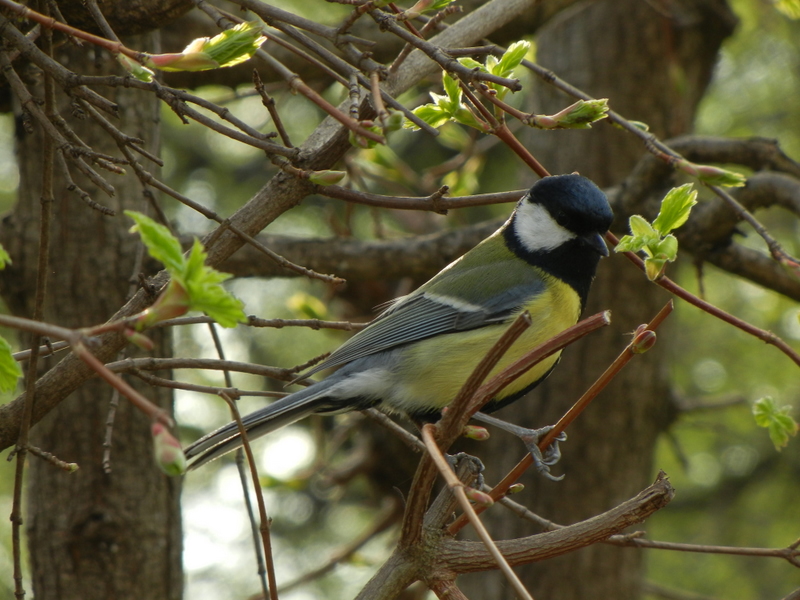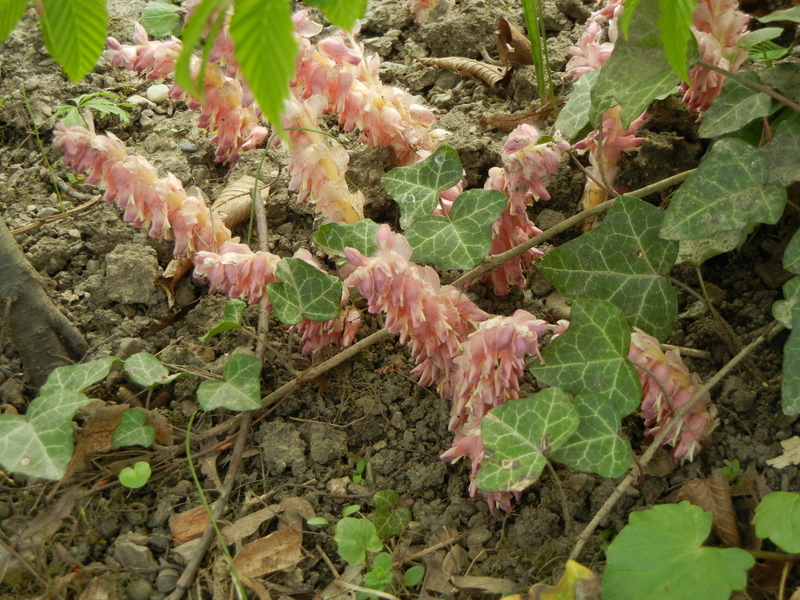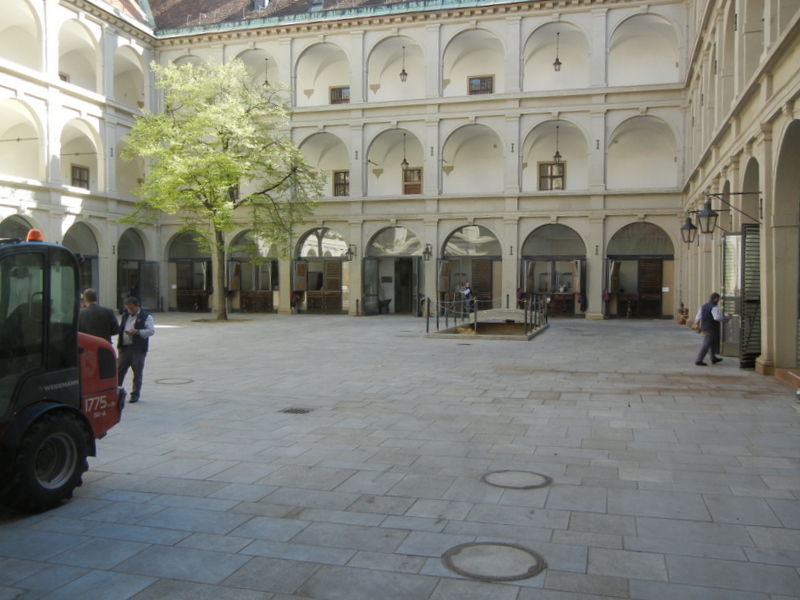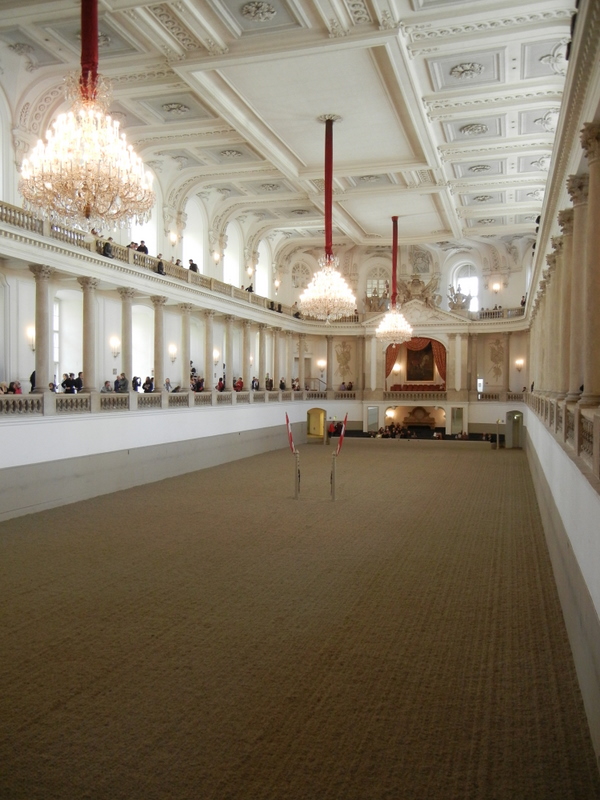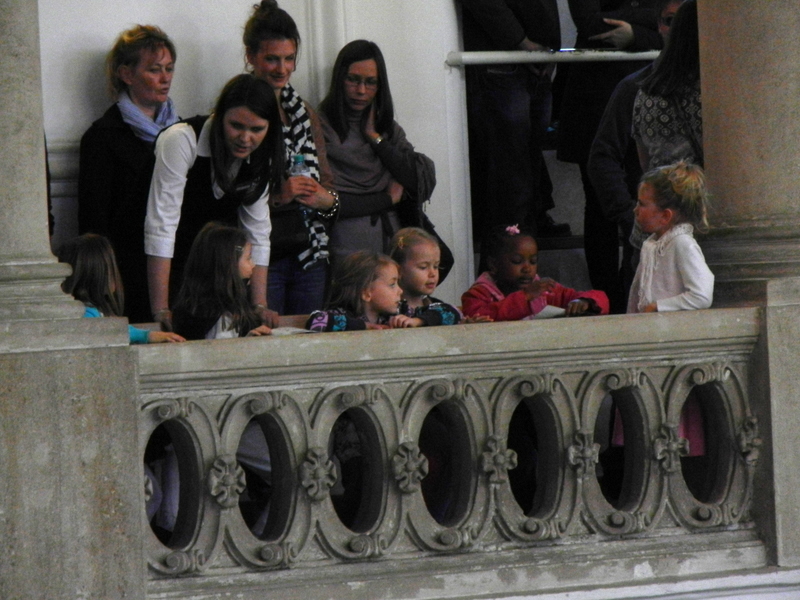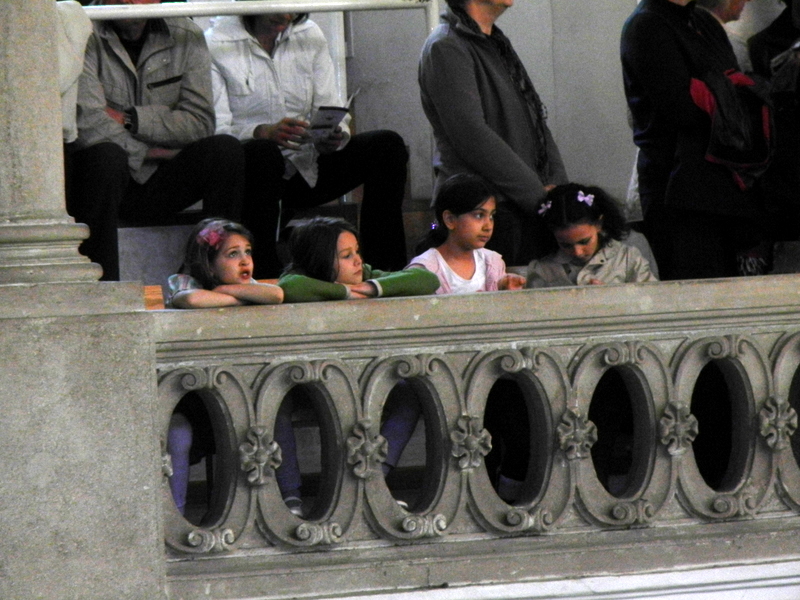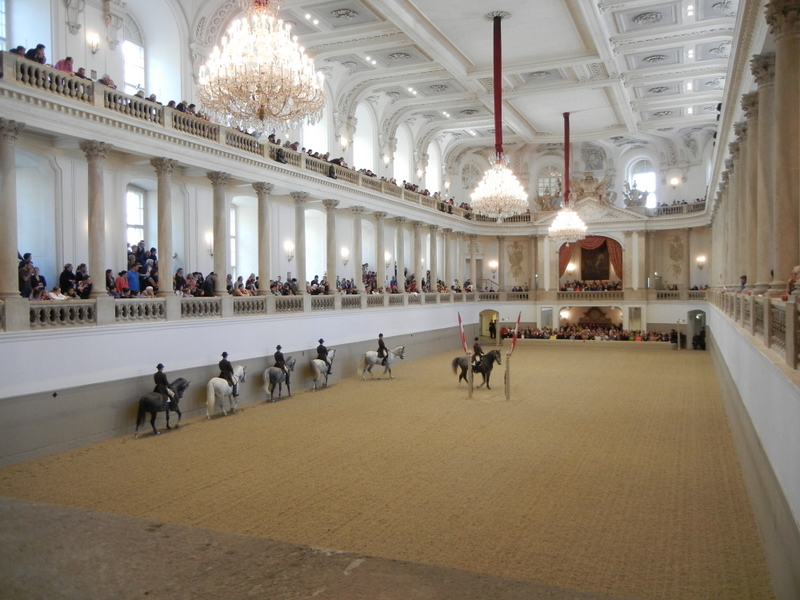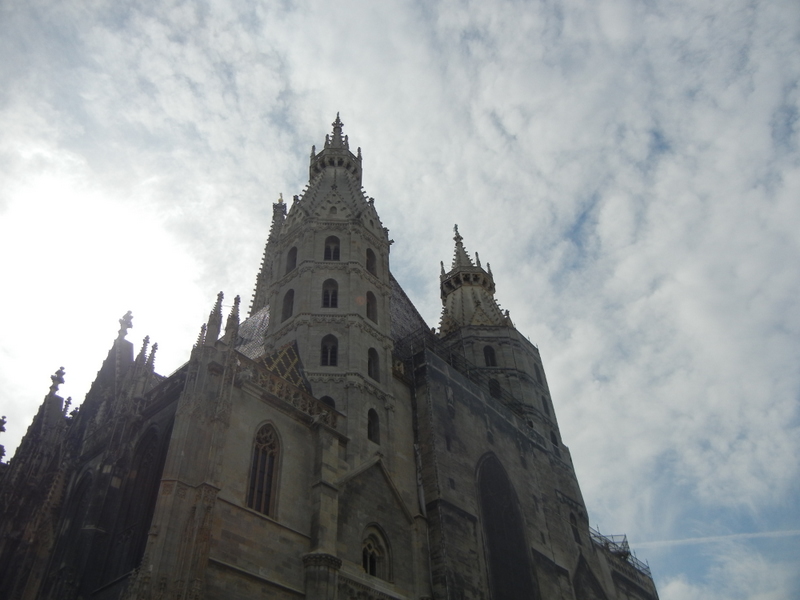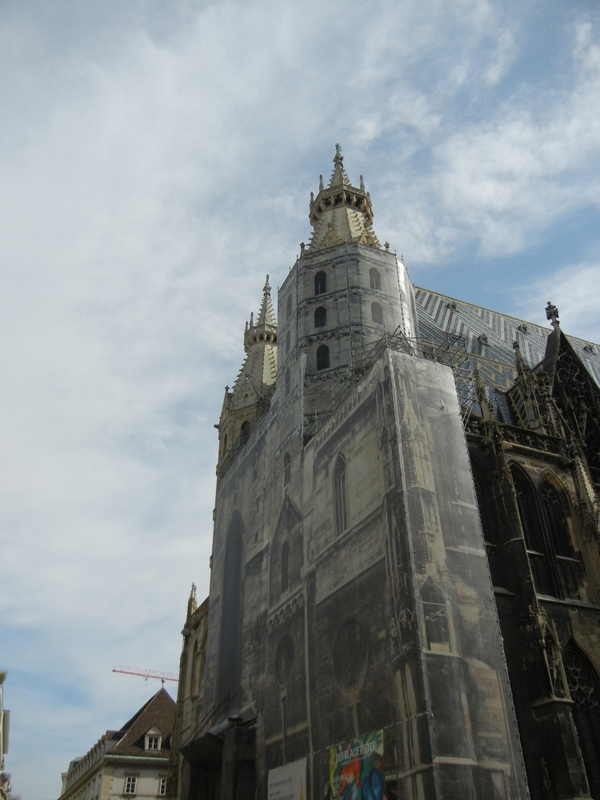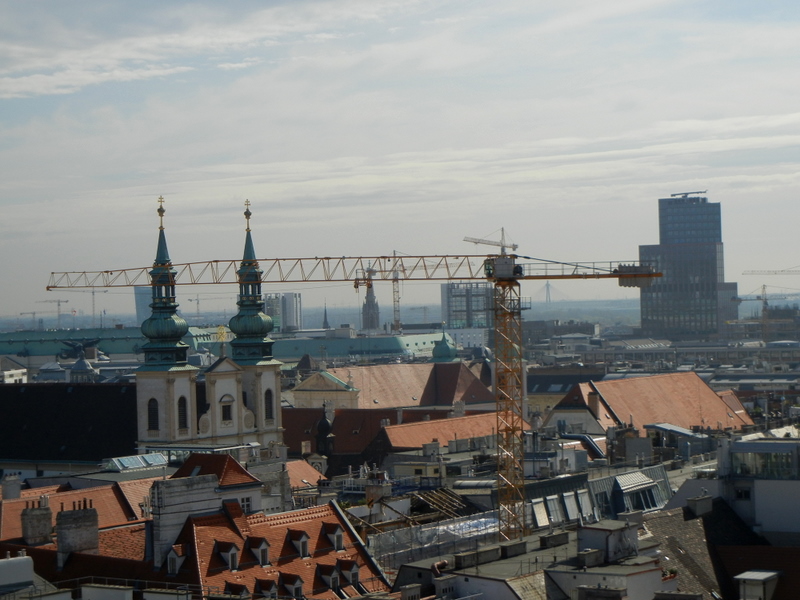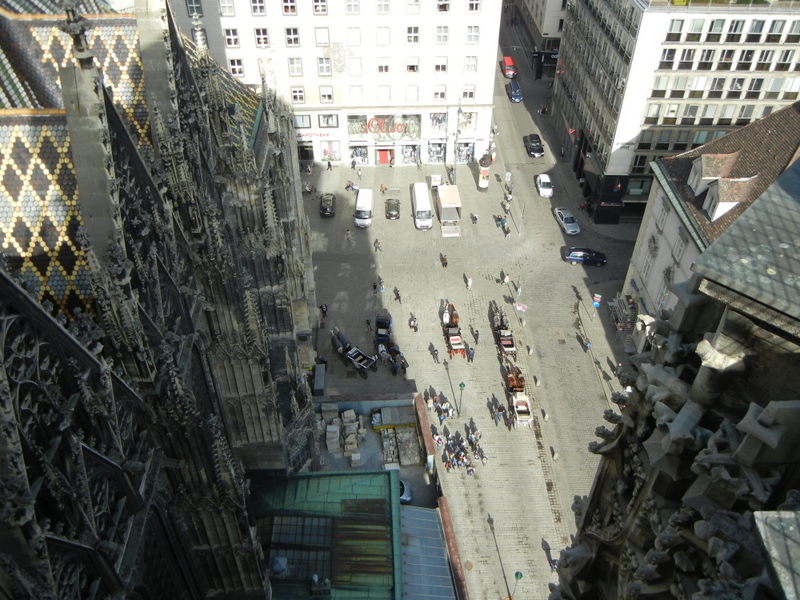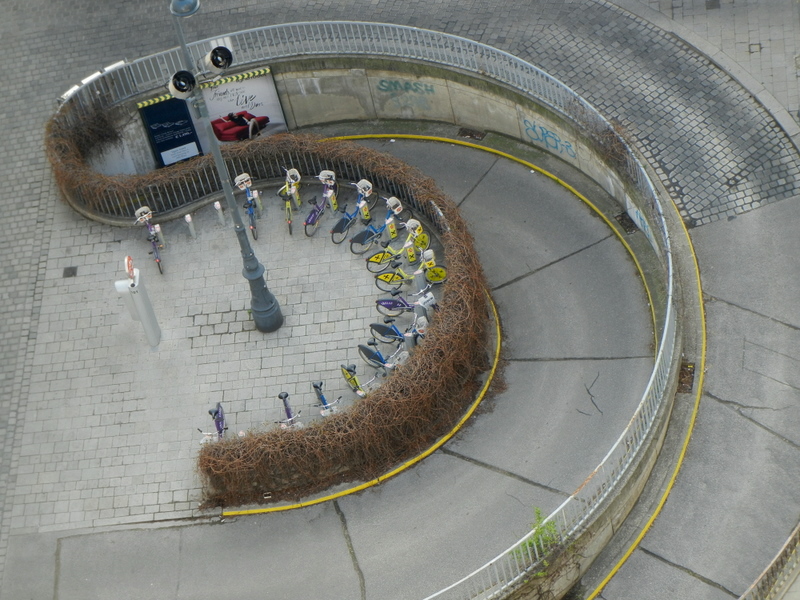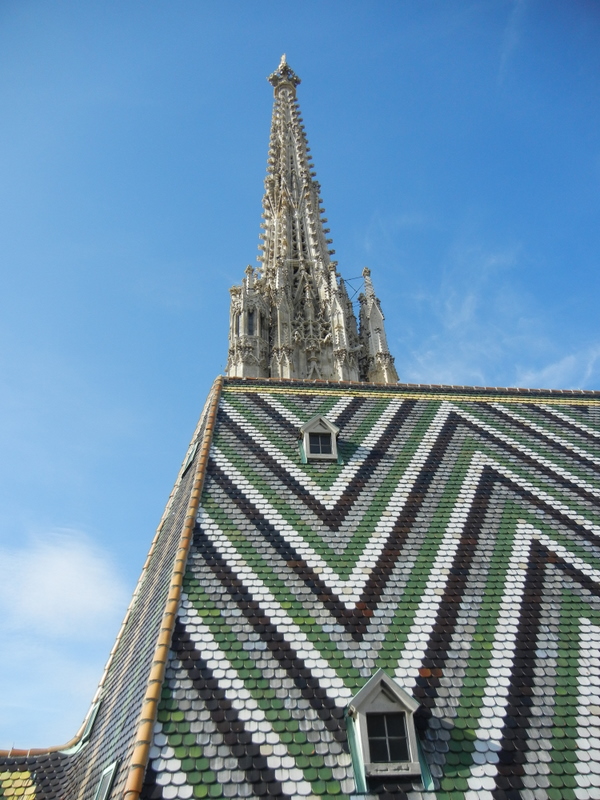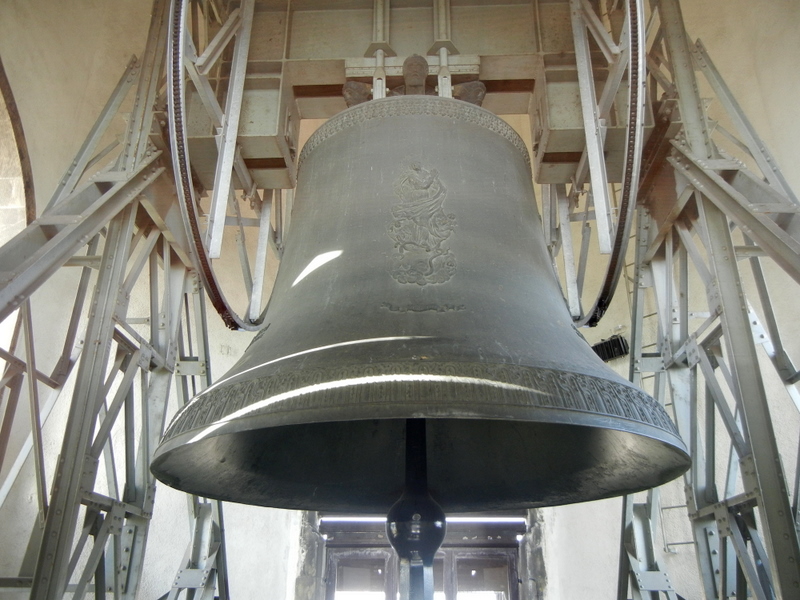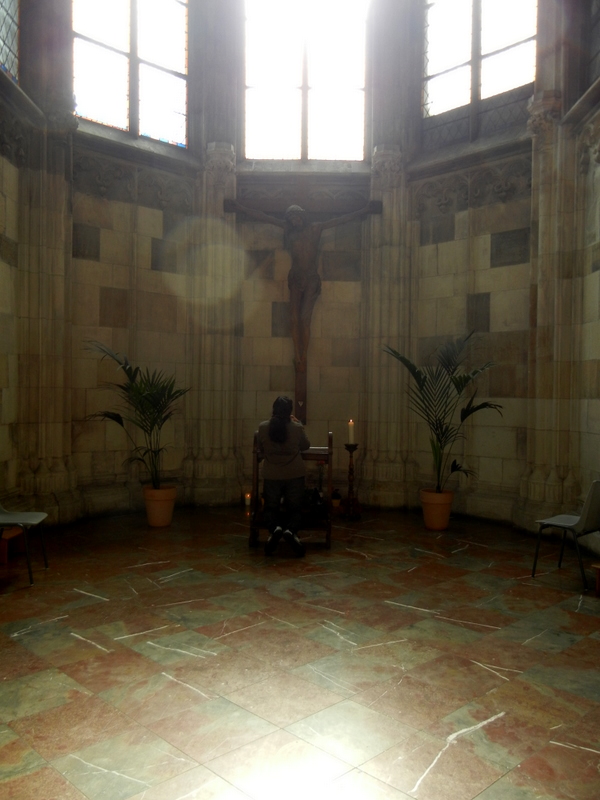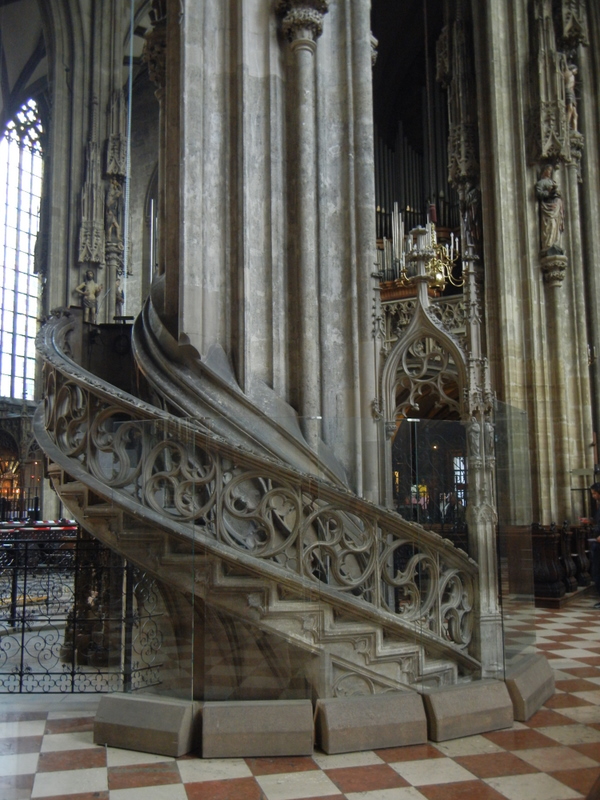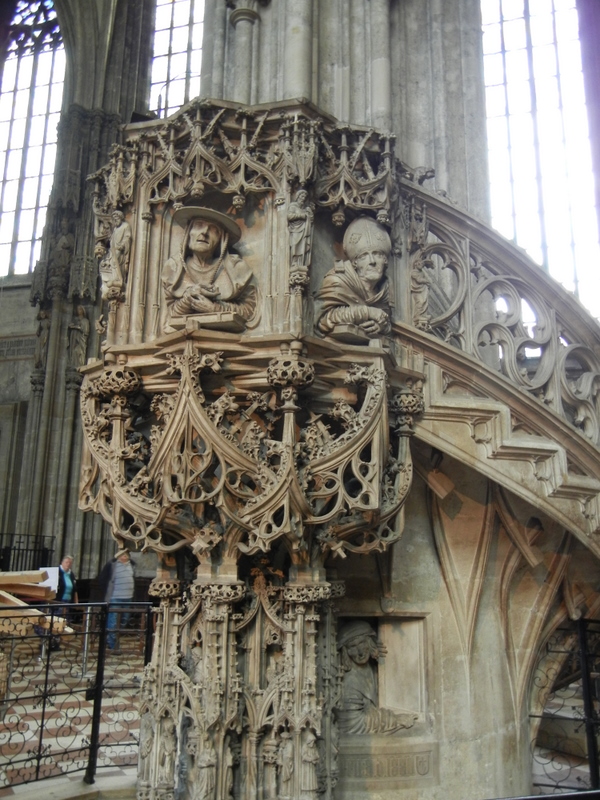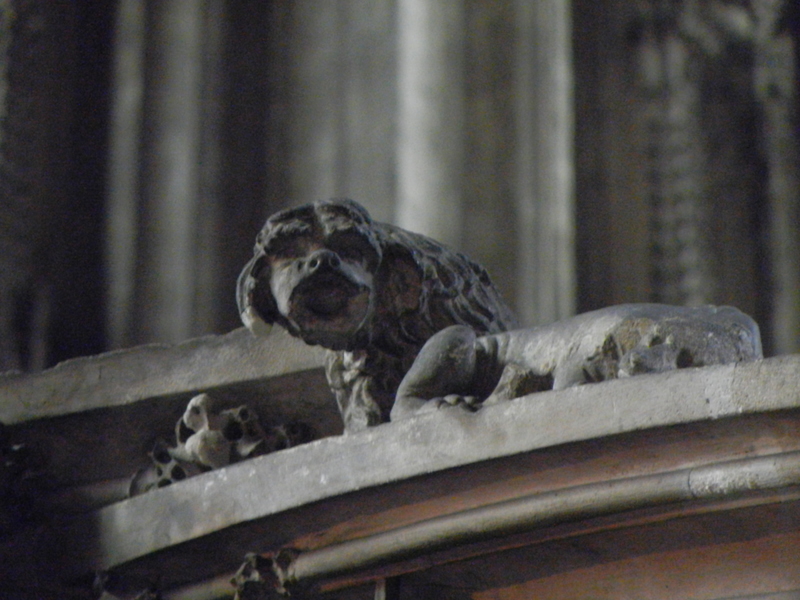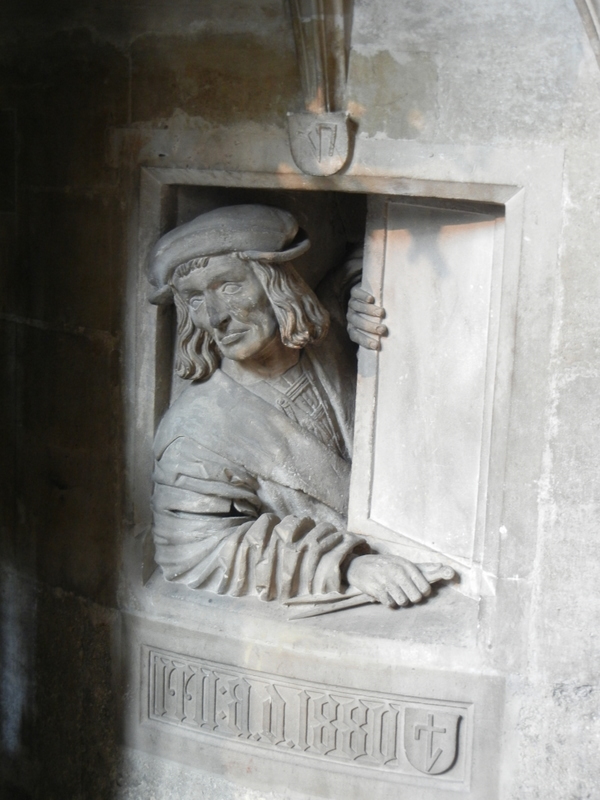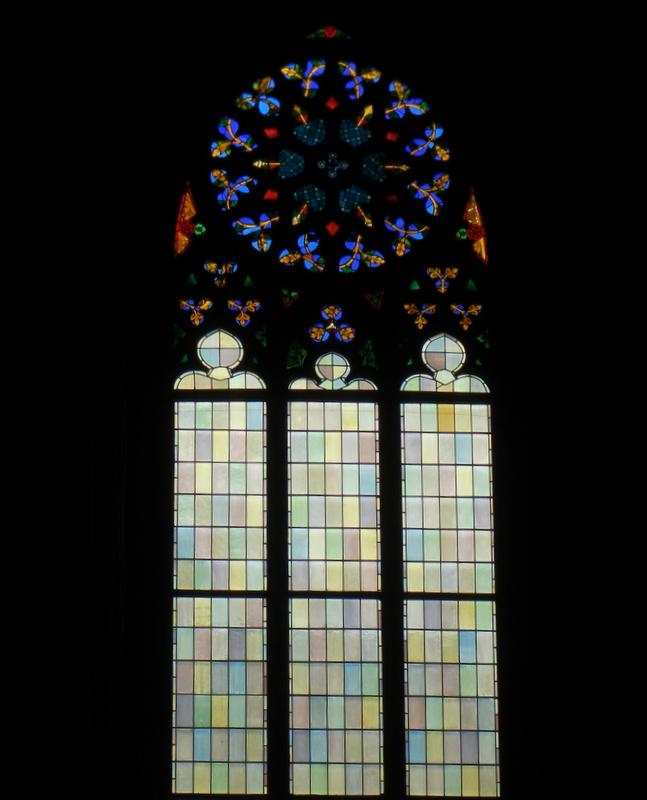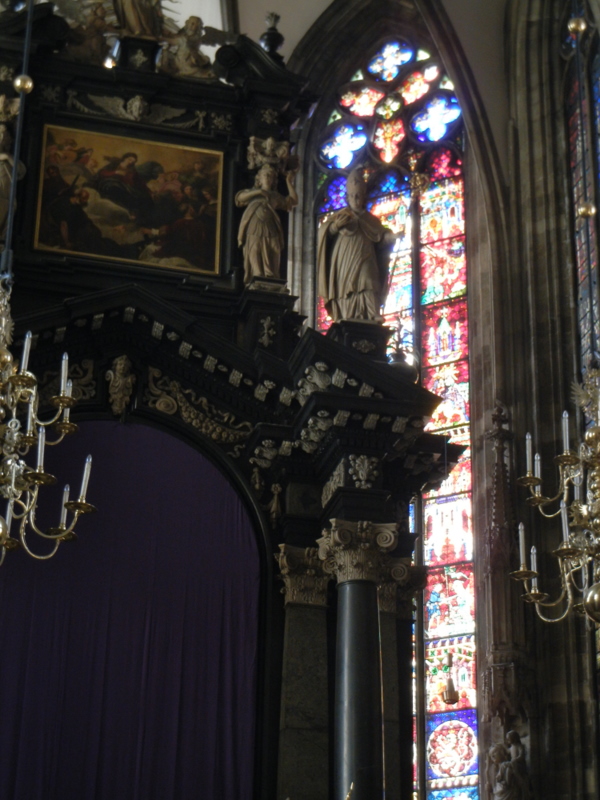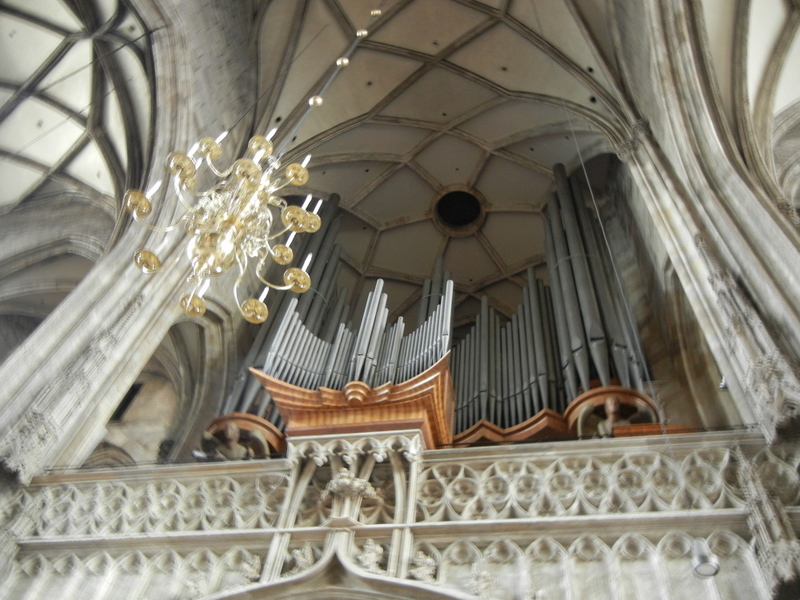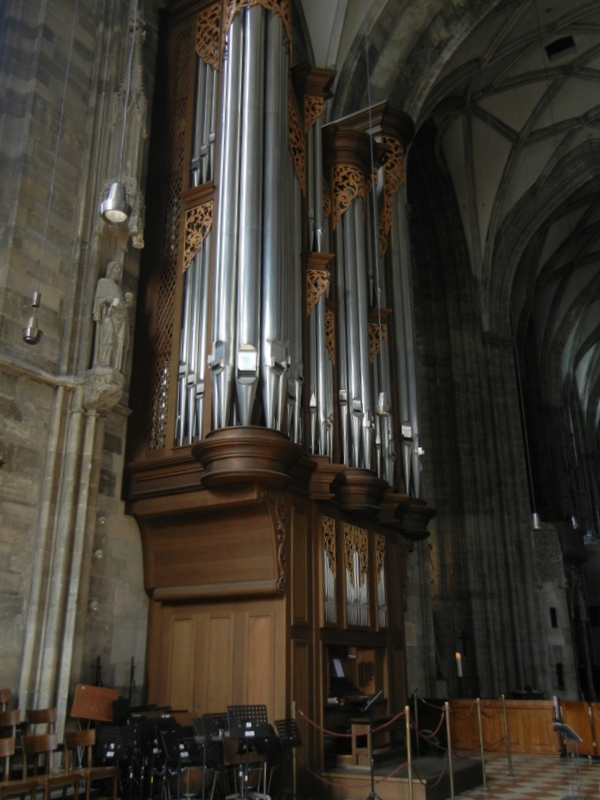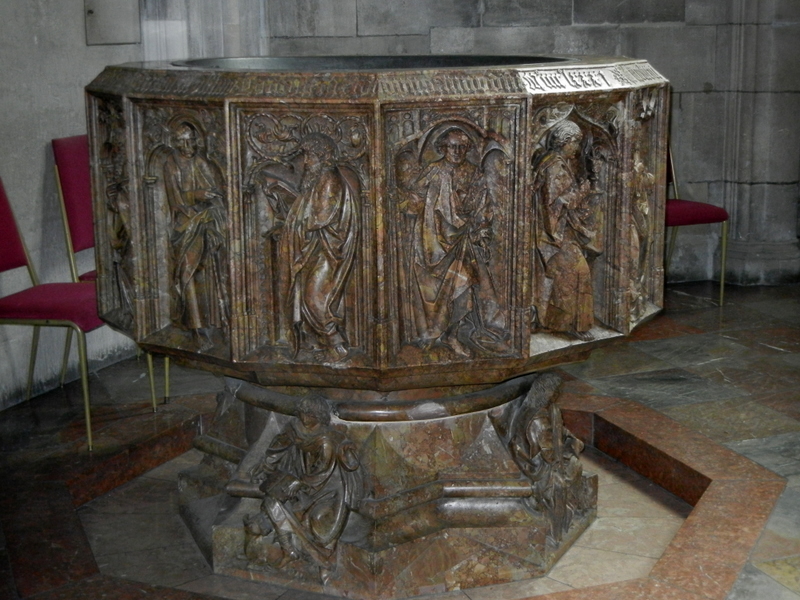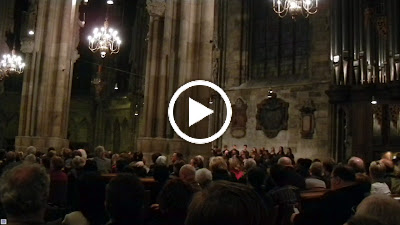We are in the middle of Lent, that particular time of the Christian year especially given to insightful self-reflection, spiritual discipline, and preparation for the celebration of resurrection. Personally, I believe this kind of work should be our practice every day, for each moment presents the opportunity to accept our death, to die to our self-absorption, and to observe and honor the life that is unfolding before us. Some begin the Lenten period with the imposition of ashes and hear, “Remember, O mortal, that thou art dust and to dust thou shall return.” Never in one day have I been reminded so profoundly of the truth of these words.
Wednesday morning, April 6, dawned, and with it the trip to Vienna for the meeting of the European Geological Union, where Bill would give a paper. We made our way to the tram and then to the underground passageway, lined with small shops and eating places, leading to the Hauptbahnhof in Graz.
Almost immediately we came upon a group of polizei standing near a body – a man stretched out in front of one of the shops. He was dead. It was so startling and unexpected, and very hard to shake. I don’t think we are meant to shake off things like this.
After buying our ticket we proceeded to the platform to await the train, a small conveyance – engine and 4 cars – one of the many that travel from Graz and point south to Vienna each day. Occupying the platform with us was a man, obviously agitated, talking to himself. We could understand nothing of his speech but the body language was clear. He waited until one train pulled out and then jumped down and over the tracks to the platform on the opposite side, something I think is strictly verboten. Soon he returned and leapt across the tracks to our side once again. His agitation increased, he confronted several people standing near us, wagging his middle finger in their faces. Suddenly, he jumped back down into the track well, just as our train was starting to come in! He seemed oblivious to this peril. A woman stepped up and yanked him out of the well. Yet again he started to turn into the path of the train. Another man came forward and pulled him back, motioning to the train which had now arrived. I wonder what happened to him, after that. Was he on some substance that made him crazy? Was he mentally ill? Was he trying to end his life? Was he just unaware, as we all are, sometimes, unaware?
We boarded the train.
All was proceeding normally. We passed through villages and towns whose names had grown familiar to us in our one and a half months residence in Austria. Looking out the windows we could see the meadows in bright green attire signaling the freshness of the season. Angling up the hillsides, furrows of dirt, newly turned, awaited seeding, or maybe already held the beginnings of next fall’s pumpkin seed oil or corn.
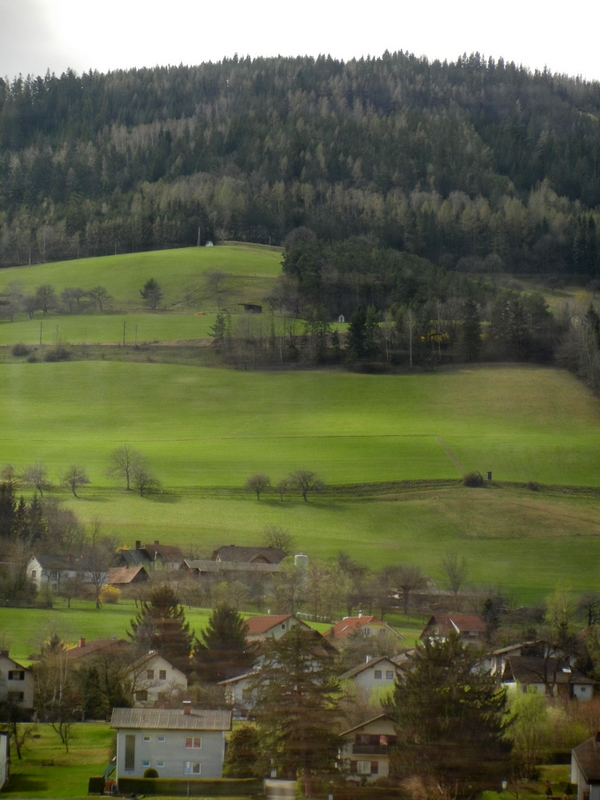
Spring arriving on the hillsides
We had passed the town of Kapfenberg, and later, the ski area in the mountains with skiers eking out the last turns on rapidly disappearing fields of white. We entered a section of forest where one could see both the fresh tips of pine trees and wildflowers emerging. Who would have thought that these dense woods, so still and yet so bursting with the promise of new life after the winter, would be the scene of something so disastrous?
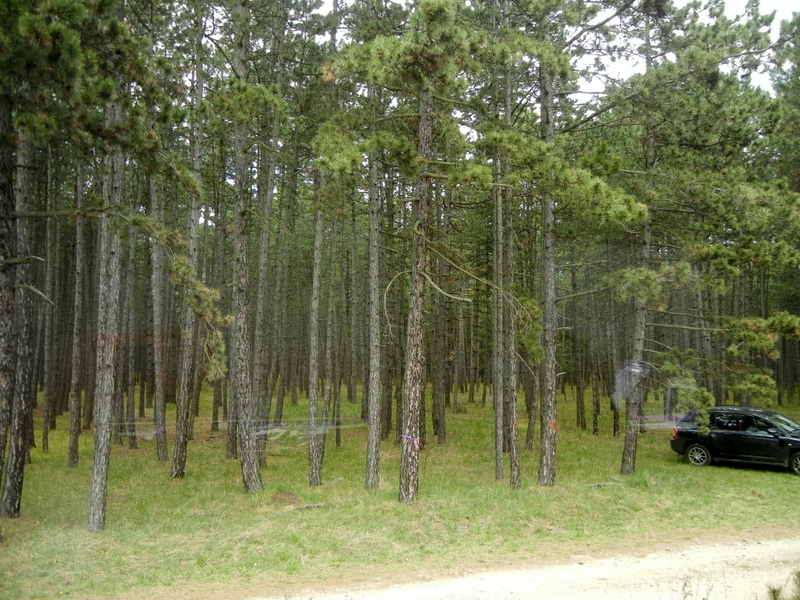
the woods near Wiener Neustadt
Not too far from the town of Wiener Neustadt the train gave a long whistle and then there was the sound of something impacting the train. It sounded like stones.
At first we thought there had been a rock slide, but there are no mountains adjacent and no where from rocks to appear. The train came almost immediately to a stop and over the loudspeaker, an announcement, most of which we could not understand, but we did hear the word gescholssen, which meant closed. And we were not to get off the train.
The conductor – a young woman – and the concessionaire – a young man – disembarked and began walking the length of the train. A man who had been riding his bike on the dirt road next to the tracks turned around. Phone calls were made and soon there appeared an ambulance. Soon after that, several police cars, and an ÖBB train inspector. Then a fire truck drove up. There was much interviewing going on of both the bicyclist and the train engineer. Intermittently the conductor came back on the loudspeaker to tell us the tracks were still closed, and finally that we would be here at least another hour. The ambulance left, but was replaced by two other medical personnel. Next, a photographer and another official donned protective blue gloves and began walking past us to the end of the train. Finally, two men in a hearse arrived. All the while the passengers stood or sat peering out the windows, silent for the most part. What was only a guess early on became clearer as events unfolded: the train had hit a human being.
It was a horrible moment, that realization. Several people wept. Those on the train reached out to one another in gesture and in words. Remember, O mortal…
Later we found out that Ernst Weber was the football (i.e. soccer) team manager of the women’s national team and of ÖFB junior selections. He was, as the newspapers report, 62 years in life. In life. He is survived by his wife Gabi and a son. His colleagues said “Ernst Weber was a good coach. But above all, Weber was a uniquely helpful and lovely person.”
Remember O mortal, that dust thou art and to dust thou shall return. Remember, how fragile is this life and how beautiful a gift. Remember to perceive and honor it with each step, each gaze, each breath.
That night, we went to the Stephansdom, Vienna’s great medieval monument and cathedral, which itself has seen many rebirths through the years.
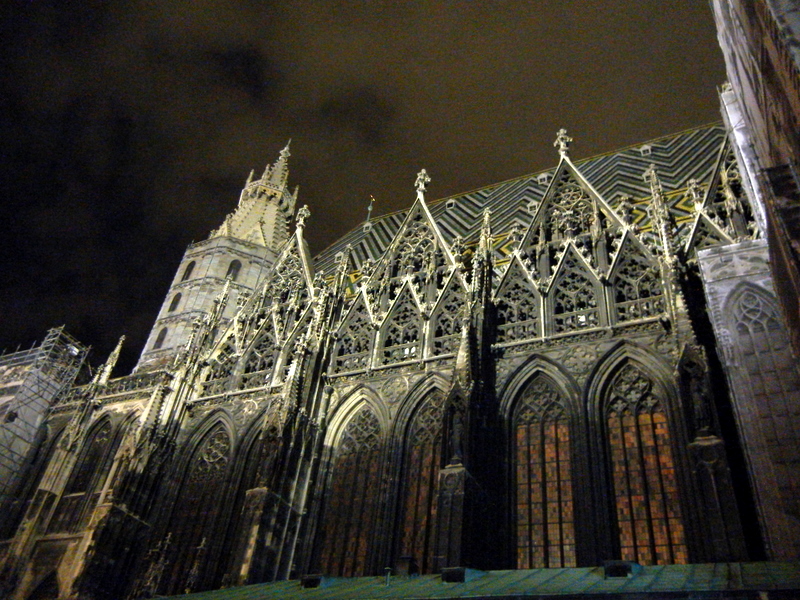
Stephansdom
To approximately one thousand people gathered there, a choir from the Louisville Kentucky Performing Arts High School sang the Mozart Requiem. They sang for Ernst, for the man in the passageway, for the man on the platform, for those caught in wars and violence not of their own making, for all of us who mourn, for all of us who have or will eventually die, for all of us to remember the preciousness of life.
Requiem aeternam dona eis, Domine,
et lux perpetua luceat eis.
Te decet hymnus, Deus, in Sion,
et tibi reddetur votum in Jerusalem.
Exaudi orationem meam,
ad te omnis care veniet.
Requiem aeternam dona eis, Domine,
et lux perpetua luceat eis.
Grant them eternal rest, Lord,
and let perpetual light shine on them.
You are praised, God, in Zion,
and homage will be paid to You in Jerusalem.
Hear my prayer,
to You all flesh will come.
Grant them eternal rest, Lord,
and let perpetual light shine on them.
Click on photo to open the video.


